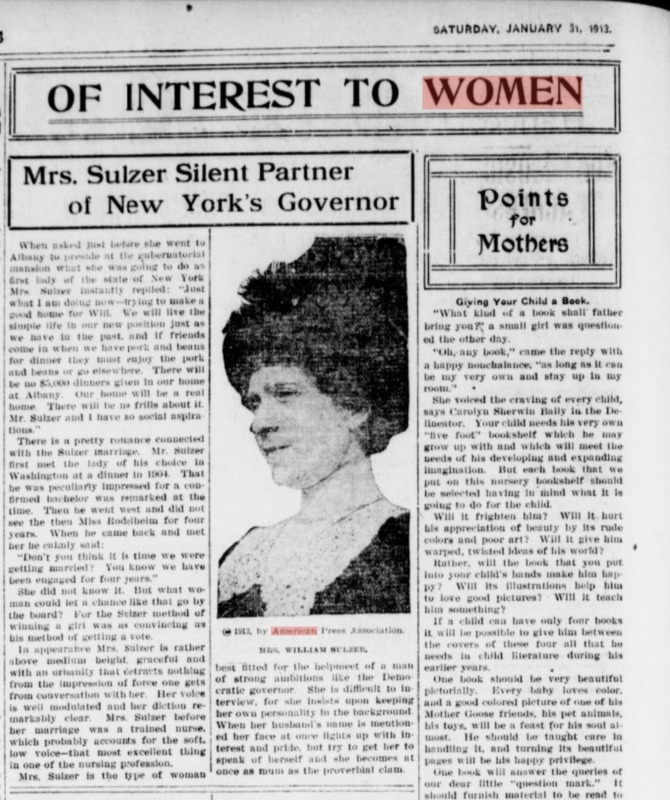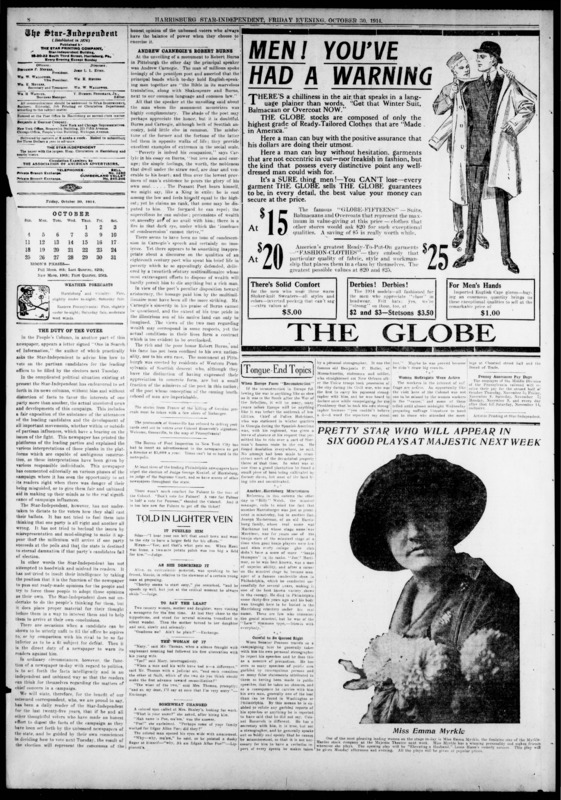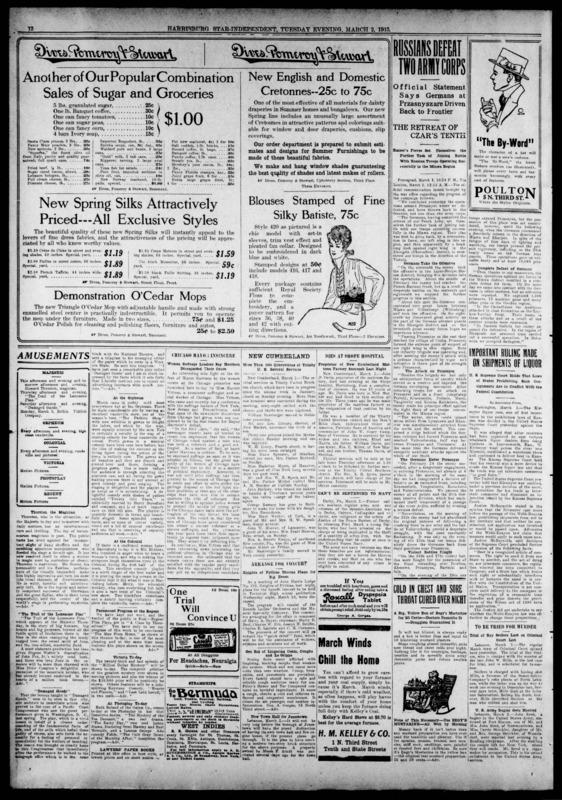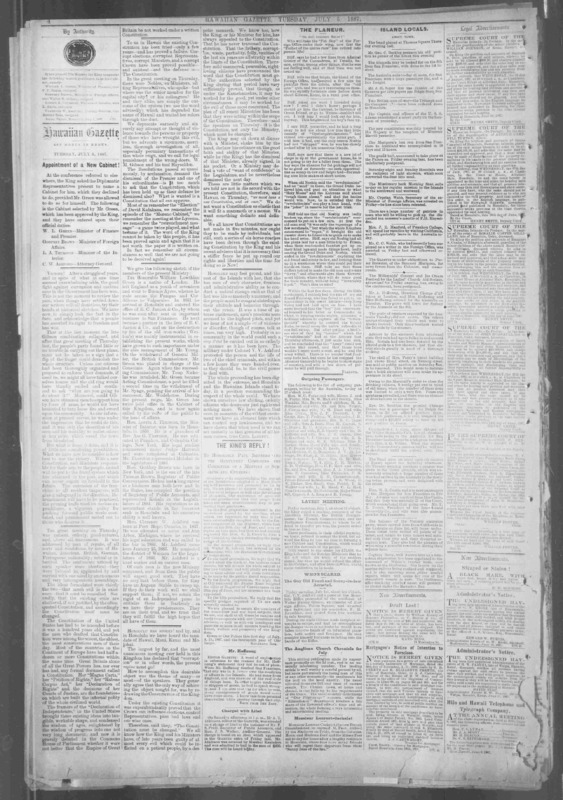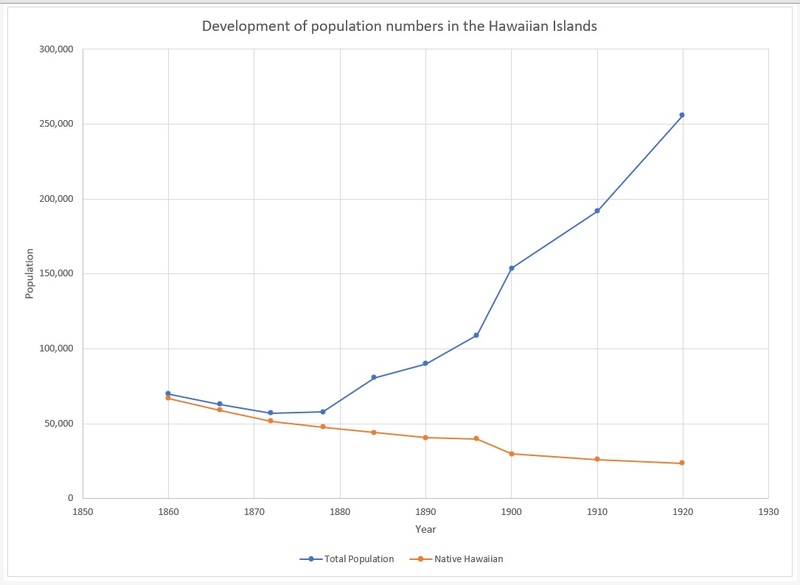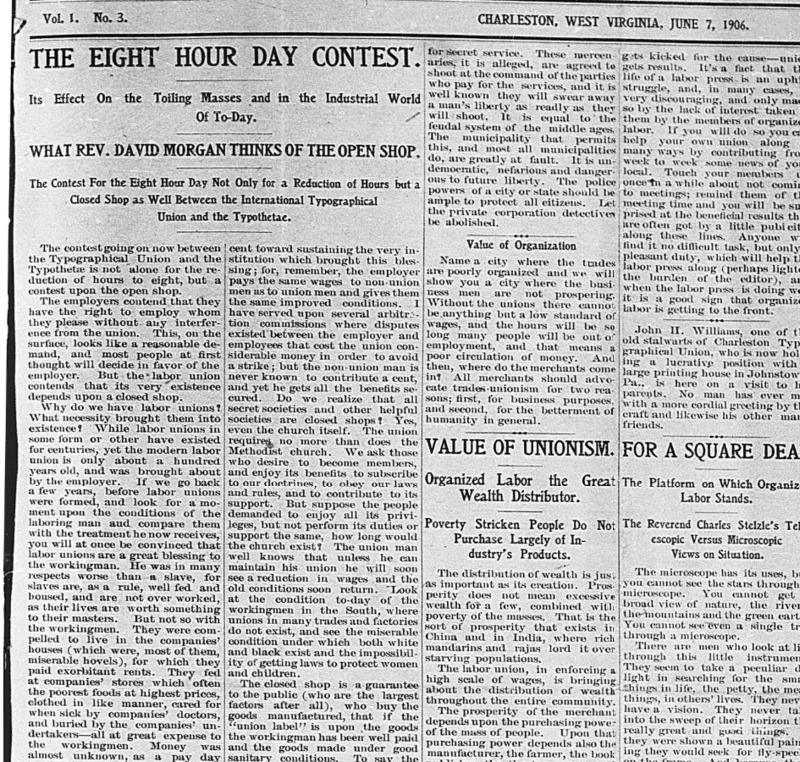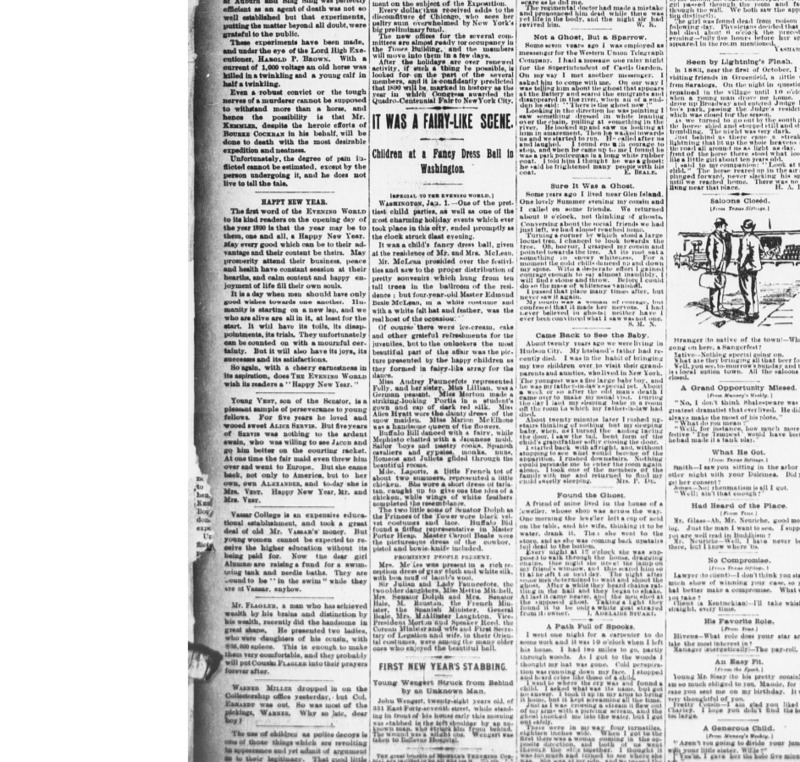Audiences
New South
Ellisville had a couple newspapers that were in circulation during the same time as the New South. As a weekly newspaper that was published in Ellisville, Mississippi, the general audience of this newspaper was the people who were currently living there. This newspaper published news from all over the county and state, so it is very likely that people from surrounding towns in Jones County were also reading this paper from time to time because it produced so many stories with a lot of information. The New South editors and dispatch reporters believed that they were addressing adults in town who were old enough and eligible to vote. With the stories that were written, it appears that their target audience was adults who had the time to read through the paper and was interested in knowing what was going on both in and out of town.
The New South ran most consistently for six years from 1892 up until 1898. This period of time that elapsed while the paper was still being published is unique in the fact that this newspaper underwent a change of audience throughout the years. Many newspapers were used to win over a certain political party in the 1890s. It is a known fact that the New South was a democratic newspaper. So, it is safe to conclude that in the early 1890s, James J. Shannon was using his position as publisher of a newspaper to persuade his audience into thinking and voting democratically. The ideal reader for his paper during this time would be adult men who could vote. Around 1895, which can be labeled as mid-life for the New South, advertisements and columns that targeted women were beginning to pop up. Although much of the content was generic and limited, it was still a switch up of audience for a newspaper. Women were now more likely to want to buy these weekly papers because they had sections solely for them to read and gather information from. A generic women’s section of the paper included fashion reports and home tips and how to be an ideal American wife. However, the publishing of women’s section was irregular at first, the number of stories and advertisements that were published in the New South gives us a hint that these sections were experimental. In the years after 1895, women’s sections in newspapers proved to be a successful component for sales. In the New South, it is apparent the rising number of stories and ads that were intended for women readers between 1892-1898. This shift shows us that the New South started with a very specific audience in mind in the beginning stages: adult men eligible to vote. Yet, over time the audience underwent an alteration in regards to their audience. They still published stories with the democratic veil to keep their male voters reading, but they added women to the list of frequent readers who would purchase their weekly newspaper.
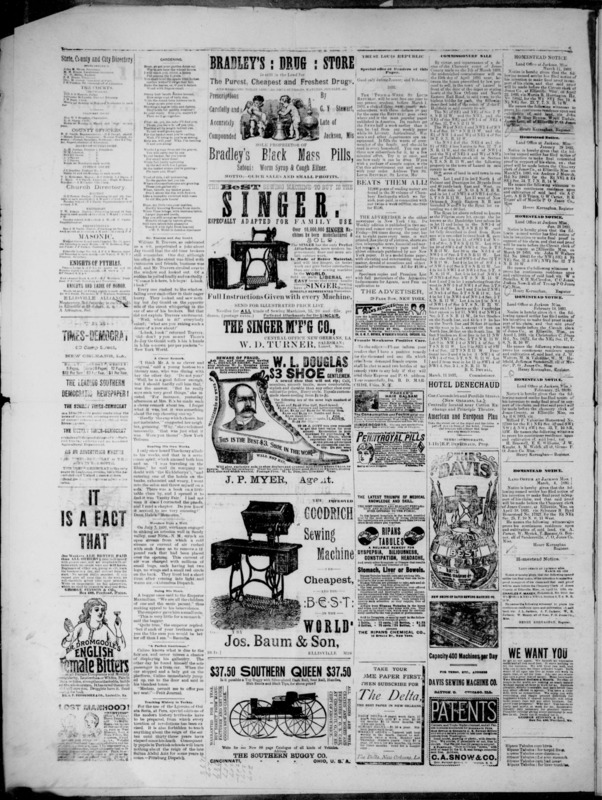
Audience (women's ad)
This page of a New South issue is mainly advertisements for different items. There is another ad for the same sewing machine as the previous one. Also, an ad for a medicine called the “Female Bitters” which was supposed to help with menstrual pain. Clearly, this page provides us with a variety of advertisements that were geared towards women.
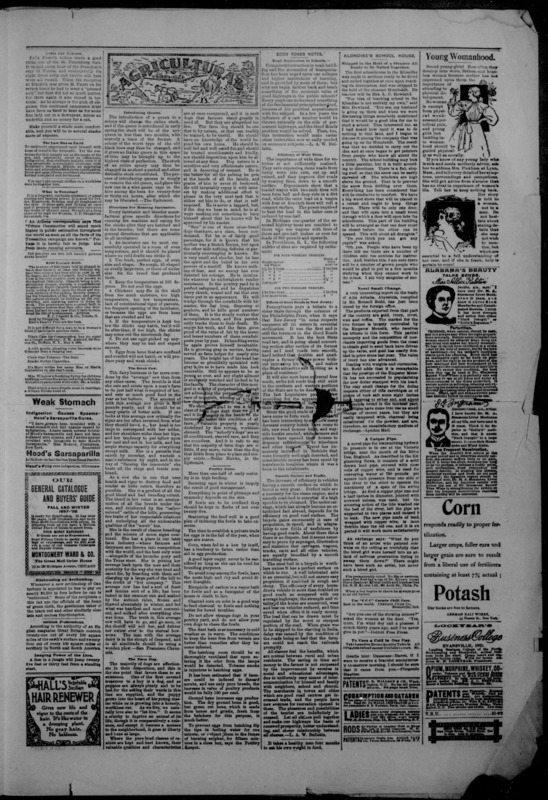
Audience (women's section)
This page of an issue from December 25, 1897. This page has a section that solely addresses women. The fact that this section addresses women only shows us how the audience of the paper was changing over the time period that the New South was published.
The Calumet News
The Calumet News did an excellent job of trying to include everyone in their newspaper. It was not biased when discussing political topics and would just report the facts. They had stories everyone could relate to because it was either about international events or what was going on in the community. There were advertisements for women, men, and children. The advertisements and images featured mainly white people, but the content was not just for white people. They made the paper community focused and that is what made them successful for 31 years.
The Star-Independent
The audience for the newspaper in Harrisburg is a mixture of men and women from the upper, middle and lower classes. This newspaper is affordable for everyone. The newspaper costs one cent. The editors and reporters for the newspaper are finding that their articles and advertisements are pushing towards everyone not only in Harrisburg but in surrounding towns in Pennsylvania that could receive this newspaper. They had more advertisements for men and that’s where they focused on. Although they audiences from women and children, they seemed to focus a lot on men and their clothes or their needs. They had audiences from all over because they had news from the region, as well as international and national. By having news from all over, the audience is more intrigued in the newspaper because they can get news from all over the world. They can introduce the audience to different things within the United States and within the world as well by having their product be acceptable for all audiences to read.
The Hawaiian Gazette
The newspaper was intended to inform all Hawaiian citizens about the new laws and activities of the legislative assembly and the Hawaiian monarchy. However, this changed when Whitney became the editor and began to cater to the growing American population in the Hawaiian Islands. While the newspaper was still catered towards Americans before Whitney became editor, there were no specific attacks on Hawaiian culture, the monarchy, or clear favoritism of either American or Hawaiian views in government until 1873. When Whitney became the editor, he began to cater to the American plantation owners who were against native Hawaiian rule and began publishing anti-Hawaiian sentiments. During the 1890s the Gazette also began publishing a one-sided account of government affairs by only publishing what laws the Legislative Assembly produced and ignored what laws the Hawaiian monarchy produced. This bias escalated in 1895 when the Gazette publicly condemned anyone against the new American government.
Capital City Courier
The audience for the Capital City Courier was the local people of Lincoln and Lancaster County, but there was some demand outside of the city, mainly in Omaha. The newspaper was highly focused on individuals that could directly interact with the city, with many of their advertisers included specific street addresses that readers could visit. Even when writing about locals of the city, their home address are sometimes mentioned in the paper when discussing them. Further, the local aspect of the newspaper can be seen in the fact that it is focused on local community events. It has the time that group meetings are being planned for, and tracks University of Nebraska Lincoln sports events, even going so far as including a frontpage picture of the Cornhuskers, a team still present today. The people that read The Courier were almost entirely those who, although not farmers, had direct everyday interactions with farmers and pioneers within the Nebraska area.
There were also a considerable number of socialites within the area and special notice was taken to those people, with the fact that The Courier was a “society newspaper.” The excessive amount of cover presented to otherwise private citizens implies that the audience wanted to know where the important people were, even if those people were only important to them. Society within the Lincoln area was extraordinarily local, with events ten miles away being more important than those a thousand miles away.
It's also incredibly important to look at the fact that The Courier had a very strong Republican-leaning. the city of Lincoln itself was named after President Lincoln, who was one of the most well-known and first Republican president there ever was. The state itself was founded by republican supporters on anti-slavery ideals, and at the time The Courier was published Republican ideals were still prominent, with many local politicians running on a Republican platform. Not only did The Courier know this, its editors stood for and encouraged its audience to be Republican.
The Labor Argus
The Labor Argus, being a socialist newspaper, had a main audience of the working class of West Virginia. Since this paper talked a lot about the coal mine workers, that could be the primary audience, as the miners in West Virigina were mainly in a union, and would want to be informed about things that actually affected them. Kanawha county, where the paper was published, would have been the main location for population, but because of the eventual merging with the Socialist and Labor Star, which is located in Huntington County showing that it is possible that the Labor Argus had a farther reach than just the county they originated in. The Labor Argus and the Socialist and Labor Star had similar audiences not just because of the short distance between the two, but because of the type of reporting that they did. With both papers reporting on labor issues, and alternative systems to improve the lives of workers, which would have an extra impact on the West Virigian population, as a lot of them during this time were coal miners.
The Waterbury Democrat
The newspaper’s readership is people in the state of Connecticut, specifically in the Naugatuck Valley area. Some of these areas include Waterbury, New Haven, and Bristol (more listed above). The Waterbury Democrat was the only daily Democratic paper in the Naugatuck Valley. It appears the newspaper’s targeted audience was the middle class, common people. Interestingly, Irish Catholics made up half of Waterbury’s population at the time and the paper aimed a lot of its content to them (as reflected in ads for church clothes, for example). The newspaper also contained many ads about saving money on items that the common classes used. It was often marketed as “the people’s paper.” It targeted Democrats, as evidenced by the title of the newspaper and the fact that a lot of the content related to labor unions and other democratic ideals. These labor unions protected the rights of many factory workers. The content of stories and ads that related to labor unions appealed to middle class, working people who made up the majority of the newspaper’s readers in that area. It is also important to note that the geographic area contained a lot of industry, factories and manufacturing plants which employed blue collar and middle-class workers. The famous industries in this region were clock making, brass item manufacturing, iron creation, and timbering. The early factories harnessed the power of the Naugatuck River to run. The newspaper therefore appealed to the target audience of people who worked in these places and their families. The principles reflected in The Waterbury Democrat were heavily aimed at the politics, religion, values, and background of their primary audience; laborers, factory workers and their families.
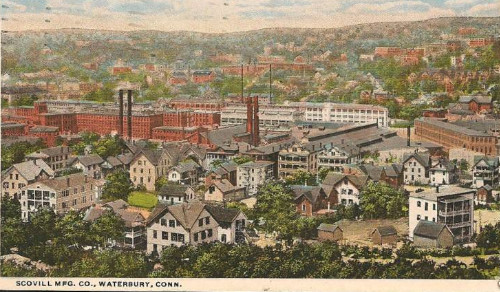
Scoville Manufacturing Plant, Waterbury Mint Factory
The Scoville Manufacturing Plant produced brass plants for coin making in Waterbury. Waterbury was known for irs brass manufacturing. Therfore, newspapers often included articles about it and the Skoville Manufacturing Company that is pictured above.
The Oxford Democrat
The editors of the Oxford Democrat were well aware that they were addressing generally poor, white, farmers/lumberjacks/hunters, who had come from an English/Scottish background. Even though Oxford County shares a close border to the French Canadians to the North, the majority of French-Canadian immigrants were non-English speaking and almost solely working in the lumberjacking industry. Therefore, the county had a generally homogenous population of readers to publish for.
Politically, the Oxford Democrat unsurprisingly produced a lot of pro-Democratic Party content. This remained true until the paper slowly became more pro-Republican during Reconstruction and the temperance movement. As a newspaper in the political realm, one could describe it as a ‘whistleblower’ publication; they reported on all things that the staff viewed as ‘undemocratic’ and took active steps to ‘call them out’.
An interesting example of the paper’s political transitionary period between Democrat and Republican is seen in the August 19, 1879 edition; the Oxford Democrat clearly states its anti-centralized government (Democratic) but pro-Radical Republican stance in the second column titled: States Have Rights. One section reads:
The Oxford Democrat believes in States, and that the States have rights. But it also believes that States have no right to throw 40,000 fraudulent votes and thereby elect a Governor by 10,000 majority, as was done in New York in 1868… It believes that States have no right to allow any party or set of men to drive candidates from the field by force of arms or intimidation, as has been done in Mississippi during the past week. It believes that States have no right to allow men to run at large, without a trial, after they have killed Negroes and white men to prevent their voting the Republican ticket
For further explanation of context, the election of 1868 for Governor in New York was won by John T. Hoffman who received large support by Tammany Hall; the Oxford Democrat felt this to be undemocratic and believe it needed to report on it. In regards to the news coming from Mississippi, the Oxford Democrat found the violent action that took place in the South post-Reconstruction alarmingly undemocratic as well, but for a wholly different reason. Alarmingly, the Oxford Democrat has no fear publishing unsavory material about other states and their politics; it’s almost certain that they received a large amount of write-ins and letters.
The New-York Evening World
Simply put, the primary audience of this newspaper was for anyone who could afford it. However, the newspaper was sold cheaply so lower-class citizens and immigrants could afford to read copies of the paper daily. The newspaper also appealed to immigrants by advocating that they are capable of greatness and highlighting stories that affected immigrants who lived in New York City. Aside from immigrants, the articles, political cartoons, and advertisements published in the New York Evening World were intended for lower and middle-class citizens who could read about daily events that affected their lives and relate to the Democratic messages that the newspaper promoted.
The Daily Alaskan
This newspaper intended its audience to be everyday men and women who would ideally read the paper and purchase the products they saw in it. This differs from who we would typically think newspapers at this time would be for, because the woman’s rights movement would culminate in the 19th amendment in 1920. Women in Alaska were not allowed to vote for the 19th amendment because it did not officially become a state until 1959. However, white women were permitted to vote as early as 1913. This meant that women could publicly be involved with politics, and subsequently, they could purchase a newspaper and read about important issues affecting them. Advertising coats for men, women, and children meant that The Daily Alaskan could corner the market on families, and it didn’t hurt that they were the only newspaper in Skagway, Alaska. By looking at the types of advertisements The Daily Alaskan included, one can gather that the audience were those who lived in Skagway or the surrounding area. They were hardworking and in need of a laundry service to wash their business attire. They took steamships on their days off to relax and get out of town for a little while. For those with the ambition to make the dangerous trek for gold, tools and warm attire were advertised. Products being advertised did not discriminate against any potential market, and children’s toys could be seen advertised in an issue or two, typically around the holidays.
The Ocala Evening Star
The Ocala Evening Star covered farming, business, and civic issues in Ocala. In 1895 the Ocala Evening Star covered the “Freeze of 1895” when the frost devastated the citrus industry which in turned paved a way for diversified agriculture in Florida. The Freeze of 1985 kick started the Ocala Evening Star due to the devastation of the crops which many farmers and locals used as a way of life. The Audience for the newspaper was mainly for the locals, due to the advertisements and news written in the articles the newspaper editors and reporters’ audience was for the locals.
The Jersey City News
There are many indicators throughout the collection of newspaper issues about who the targeted audience of the paper is. As stated previously, The Jersey City News includes in every daily issue the same sentence that says, “The Jersey City News is the only Democratic daily paper published in Jersey City”, which clearly shows that the content will be much more Democratic in nature than the republican newspapers that were circulating around the city at the time. With The Jersey City News being a relatively inexpensive newspaper, many people around the city could afford to buy a copy every day. There is even a subscription price at around six dollars per year for some readers who may know that they will want to read that specific paper daily. In addition to the audience of the paper being from the Jersey City area and having democratic viewpoints on politics, it was also discussed earlier that the advertisements in the paper give certain implications about who would be reading the newspaper. Another interesting section of The Jersey City News that informs historians about who the audience of the paper was the “help wanted” section. While this section’s purpose may seem obvious, one must note that the section includes possible job openings for both men and women. This heavily implies that the audience of the paper must include some women because the job advertisements are targeted toward them in many situations. Clearly, if the sections for possible job options are separated by men’s and women’s jobs, there is the intention of both men and women reading the newspaper to discover a possible employment opportunity. Other small sections in The Jersey City News, such as the weather on a particular day, and some scores from a local sports game, indicate that the newspaper had been a very localized source of news, meaning only residents of Jersey City would be interested in updates about the community.
The Sacramento Daily Record Union
The Audience of the paper is one that was clear from its very inception and never changed in its entire run, it was a paper for the people of Sacramento and the state of California that focused on issues that those people would care about. Reported stories and advertisements were almost always targeted towards the demographics of miners and farmers in California state. Articles on market prices of produce and livestock were common in mostly every issue and discussion of stocks in mining were also plentiful. The annual review featured many pages of relevant information to the audience such as reviewing the trade in Sacramento for the year, changes in Sacramento schools, moths that had been pestering the fruit crops for the year, important politics of the year, and reviews of how local businesses fared for the year. The audience of farmers and miners can also be seen within the advertisements of the paper as most are items that would be useful to one of those jobs.

